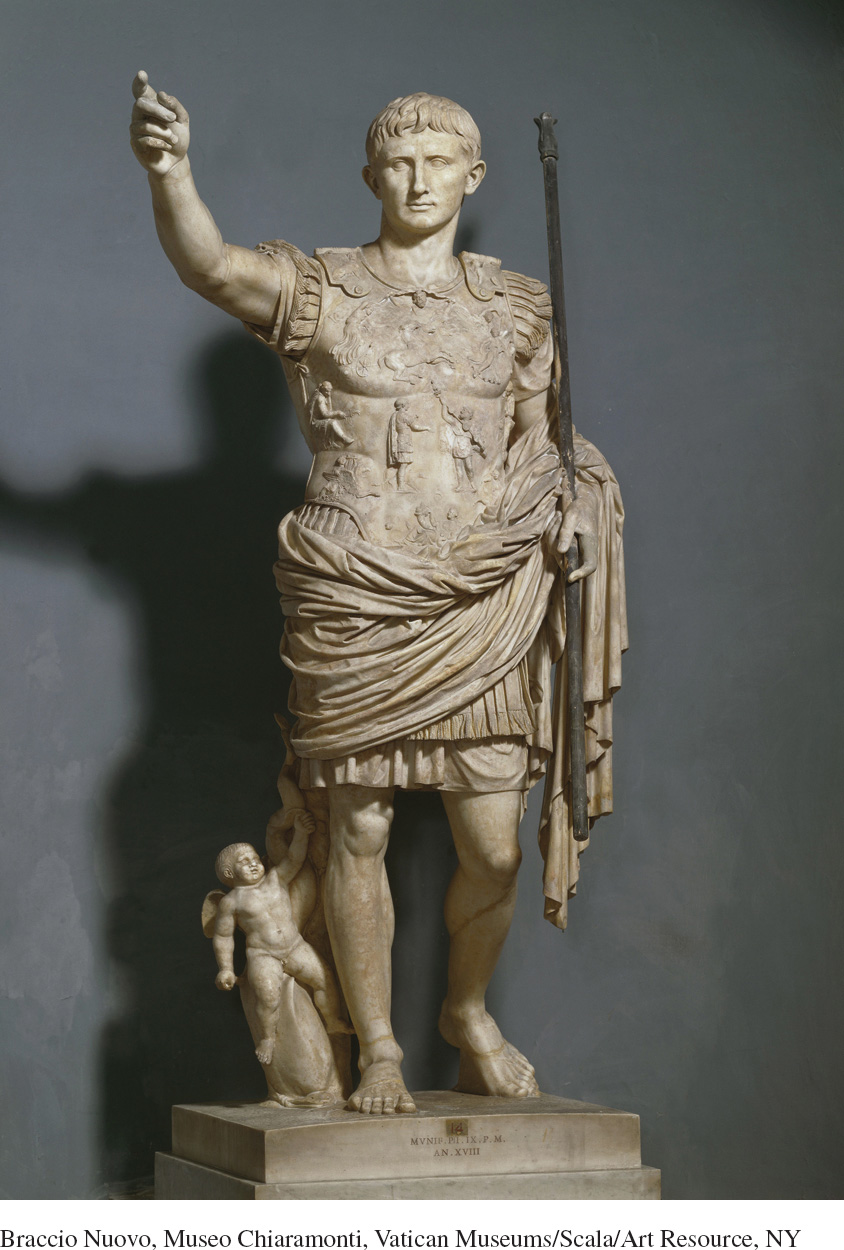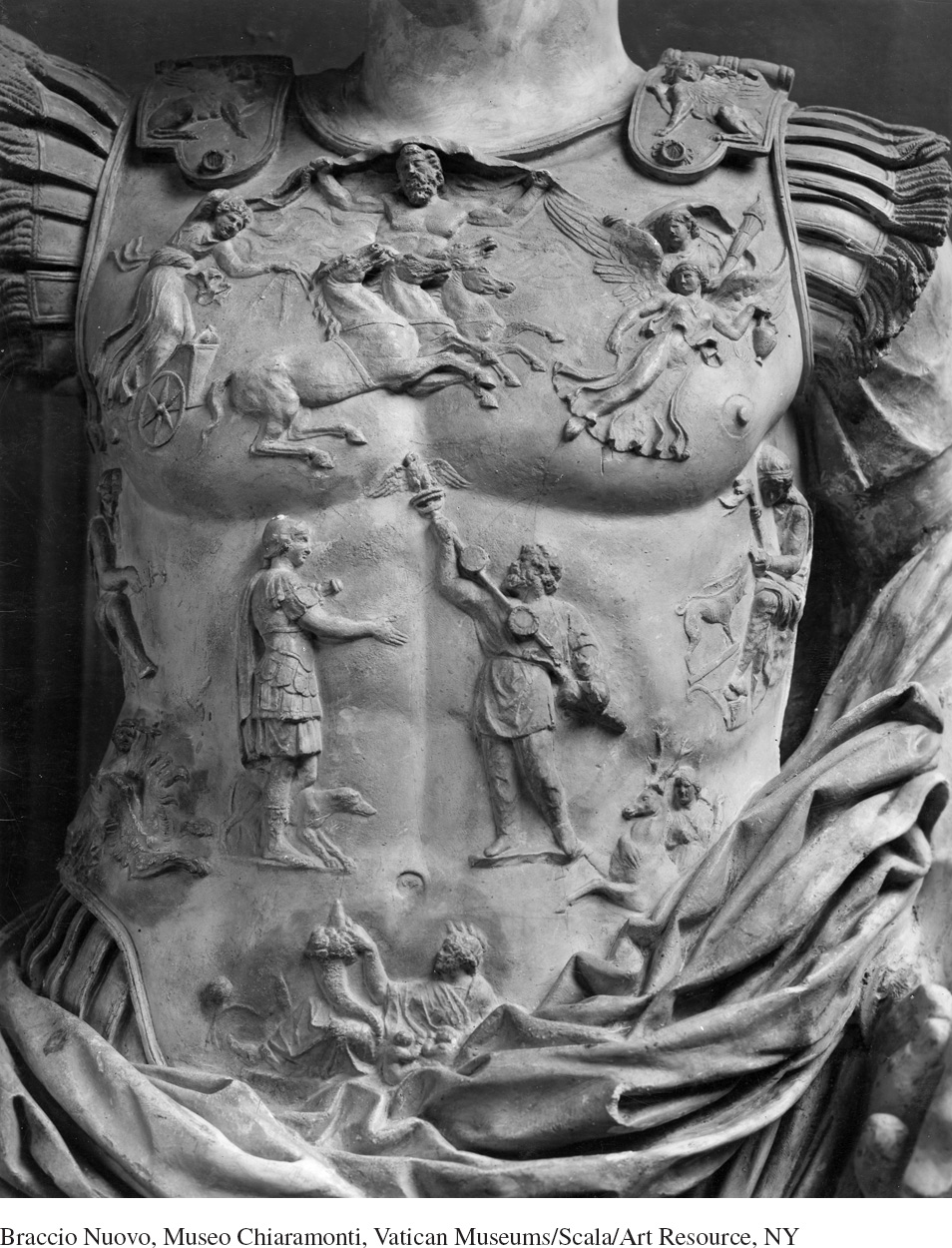Source 3.3
Statue of Augustus
This statue of Augustus, the first of the Roman emperors (r. 27 B.C.E.–14 C.E.), was probably created shortly after his death, though based on a somewhat earlier bronze original. It symbolized a new era of peace and abundance in Roman history, following a century of turmoil and civil war. Here Augustus is “imperator” or military commander, wearing a breastplate and with his right arm extended as if addressing his troops. The statue was clearly intended to commemorate the victory of Augustus over the Parthian Empire, centered in Persia, in 20 B.C.E., a triumph that reversed several earlier Roman defeats. The central relief on the breastplate shows the Parthian ruler (on the right) returning to a Roman military figure the battle standard that the Parthians had seized thirty-
The other figures from Roman mythology on the breastplate represent the ordered, peaceful, stable, and bountiful world that the defeat of the Parthians promised. Cupid or Eros, riding a dolphin next to Augustus’s right leg in the statue, evokes his mother, Venus, often said to be an ancestor of Augustus. Notice that the military figure of Augustus is strangely barefoot, a portrayal usually associated with gods and heroes.
Questions to consider as you examine the source:
- What does the statue suggest about the basis of Augustus’s legitimacy as a ruler? What kind of future for the empire does the statue evoke?
- Although Augustus resisted being portrayed as divine, the statue is laced with religious imagery. What does this imagery suggest about the way Augustus was coming to be viewed?
- Which elements of the statue suggest a realistic portrayal of Augustus, and which show an idealized image of him? Notice particularly his face and posture. What sensibility is the artist seeking to convey?
Source 3.3A
Augustus Statue

Source 3.3B
Augustus Statue: The Breastplate

Notes
- Paul Zanker, The Power of Images in the Age of Augustus (Ann Arbor: University of Michigan Press, 1988), 187.